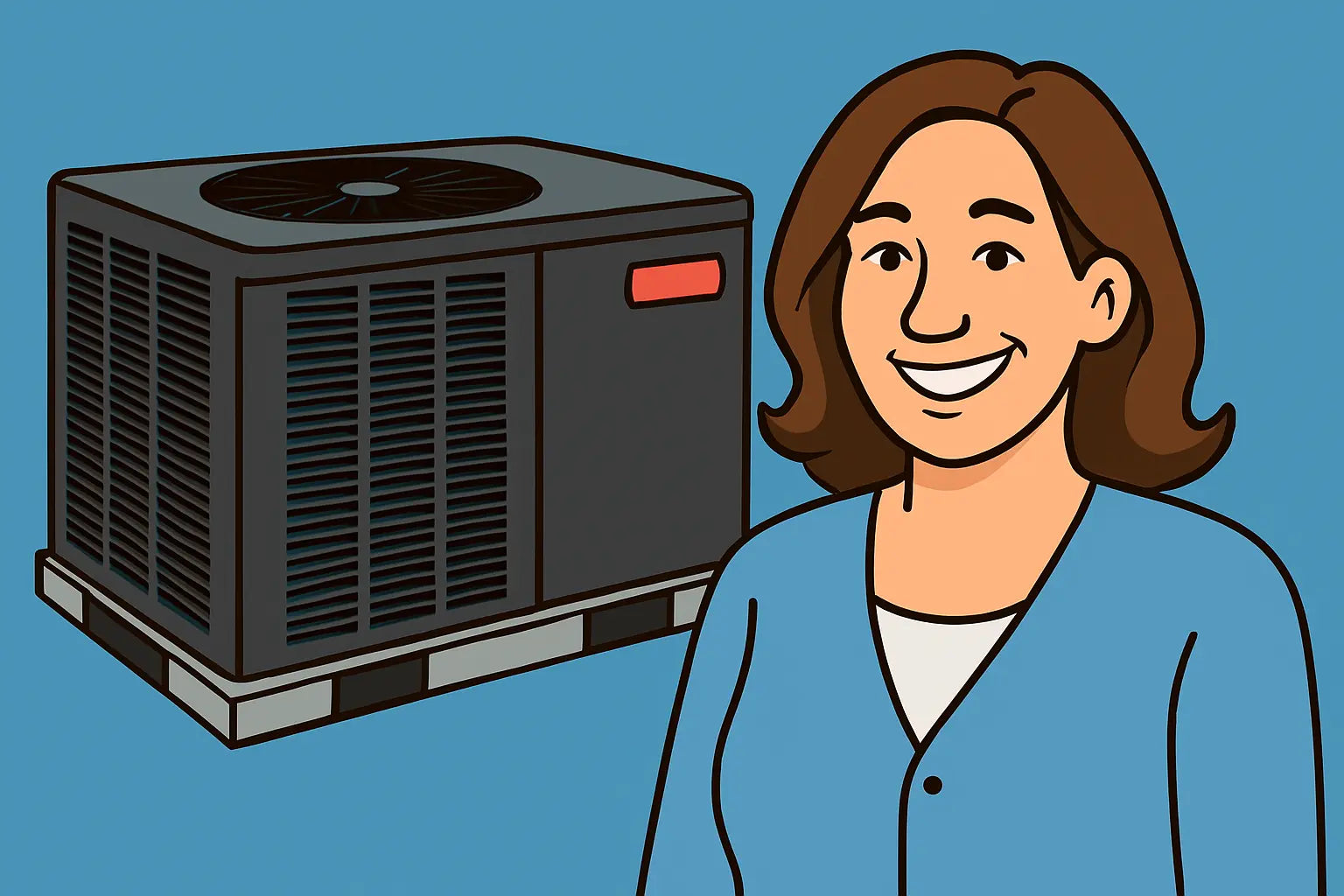Hello, cool seekers! 🌬️
Samantha here with a topic that’s both essential and often misunderstood: R-32 refrigerant safety. The Goodman Horizontal Air Conditioner 3-Ton GPCH33631 uses R-32 for better efficiency and lower environmental impact—but it’s not a “set it and forget it” refrigerant. Mishandling can lead to leaks, damage, or safety hazards. Today, we’ll go over all the homeowner-friendly safety tips you need.
1. Understanding R-32 and Why Safety Matters
R-32 is classified as an A2L refrigerant, which means it’s mildly flammable. It’s a single-component refrigerant with high energy efficiency and lower global warming potential (GWP) compared to older options like R-410A.
Key takeaways:
-
Safe for residential AC when handled correctly.
-
Requires proper ventilation during servicing.
-
Cannot be mixed with R-410A or other refrigerants.
For an accessible overview, the EPA’s refrigerant safety guide explains why following proper handling protocols is crucial for both safety and regulatory compliance.
2. Proper Storage of R-32 Cylinders
If you ever need to store refrigerant for service or top-offs, proper storage is essential:
-
Keep cylinders upright in a cool, dry, well-ventilated area.
-
Never store near heat sources, open flames, or electrical panels.
-
Avoid dropping or denting cylinders—they’re pressurized and sensitive.
-
Always label cylinders clearly to prevent accidental misuse.
The ASHRAE refrigerant safety standards provide detailed guidance on storage practices for flammable refrigerants like R-32. Check out their overview here.
3. Personal Safety Gear and Ventilation
Even a small leak can be dangerous in a confined space. Homeowners and technicians should:
-
Wear gloves and safety glasses when handling lines or connections.
-
Ensure proper ventilation in service areas to avoid accumulation of refrigerant vapor.
-
Keep fire extinguishers rated for electrical and flammable situations nearby.
The National Refrigerants INC highlights proper personal protective equipment for A2L refrigerants here.
4. Leak Detection and Prevention
A slow refrigerant leak can reduce cooling power and increase energy costs before you even notice a problem.
Tips to avoid leaks:
-
Inspect all fittings and line connections after installation.
-
Use leak detection tools rated for A2L refrigerants—not older R-410A-only detectors.
-
Perform routine maintenance, especially before peak cooling season.
For homeowners, the HVAC School’s A2L leak detection guide is a practical resource that explains which detectors work best with R-32 and how to use them safely: HVAC School Guide.
5. Servicing and Charging
Only certified technicians should charge or top off R-32. Improper charging can:
-
Overpressurize the system, risking mechanical failure.
-
Cause refrigerant leaks.
-
Void your warranty on the GPCH33631.
For safe practices, the Refrigeration Service Engineers Society (RSES) provides excellent guidelines for servicing flammable refrigerants: RSES Flammable Refrigerants Guide.
Even as a careful homeowner, you can assist by ensuring the system is accessible, clean, and free of obstructions, reducing the chance of technician error.
6. Environmental and Regulatory Considerations
R-32 has a much lower GWP than older refrigerants, making it better for the planet. But improper handling can still be environmentally harmful.
-
Never release refrigerant into the atmosphere.
-
Follow EPA Section 608 requirements for recovery and recycling.
-
Use authorized service providers for any major repairs.
7. Samantha’s Quick Safety Checklist
For quick reference, here’s my personal checklist for R-32 safety with the GPCH33631:
-
Verify proper ventilation in all work areas.
-
Wear gloves and eye protection when handling lines.
-
Inspect all connections for leaks before turning on the system.
-
Never mix R-32 with other refrigerants.
-
Schedule annual professional inspections to catch hidden issues.
This little checklist keeps your AC safe, efficient, and happy all year long.
Samantha’s Send-Off
Working with R-32 might feel intimidating, but understanding the basics goes a long way in keeping your Goodman GPCH33631 running safely and efficiently. 🌬️
Remember: ventilation, proper PPE, leak prevention, and certified service are your best friends here. Treat your refrigerant carefully, follow safety practices, and your horizontal AC will reward you with years of reliable, cool comfort.
Need a seasonal maintenance checklist for this Goodman unit? Visit my guide: Stay Cool Year-Round.
Stay safe, stay smart, stay cool,
— Samantha, Home Comfort Advisor







